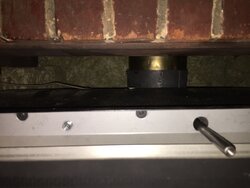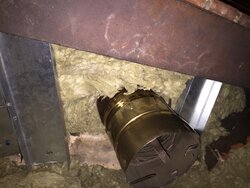I would still do a block off even on an internal chimney, I just wouldn't worry as much about insulating the firebox, but I still believe that insulating the firebox helps keep the heat where it needs to be in either an exterior or interior fireplace.
At a minimum pulling the surround and stuffing the damper throat with Roxul will be better than doing nothing.
At a minimum pulling the surround and stuffing the damper throat with Roxul will be better than doing nothing.




